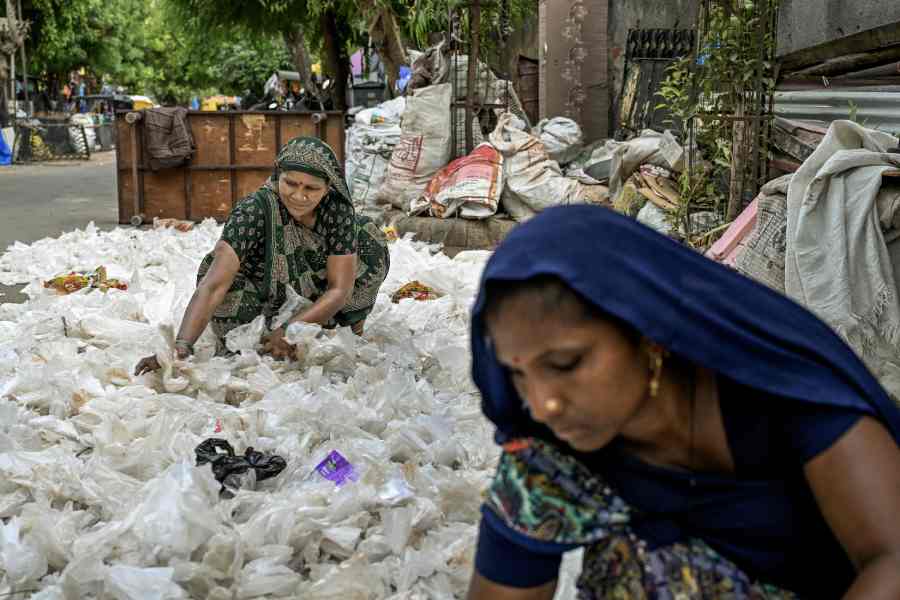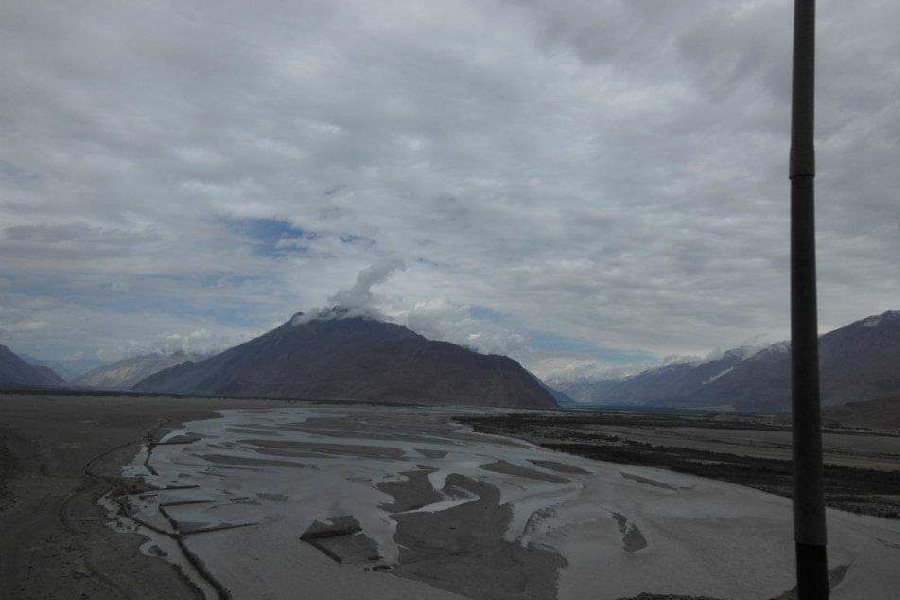An app that helps people find relief from the heat.
A tiny insurance policy that pays working women when temperatures soar.
Local laws that help outdoor workers get water and shade on sweltering days.
As dangerous heat becomes impossible to ignore, an array of practical innovations are emerging around the world to protect people most vulnerable to its hazards. What’s notable is that these efforts don’t require untested technologies. Instead, they’re based on ideas that are practical and already known to work.
They offer a window into the need to adapt to the new dangers of extreme heat that have played out vividly in recent weeks, killing still-untold numbers of religious pilgrims, tourists and election workers around the world and driving up emergency room visits for heat-related ailments in the United States.
The World Meteorological Organization has said that heat now kills more people than any other extreme-weather hazard and has called for many more “tailored climate products and services” to protect people’s health, including easy-to-use tools to find help.
There’s an App for That
Iphigenia Keramitsoglou is an atmospheric physicist who specializes in remote-sensing data. She looks at the world from very far away.
Much of her work, though, isn’t remote at all. Keramitsoglou led a team that built a cellphone app to give users real-time information about how to stay cool.
Put your location into Extrema Global and it will show the outside temperature, air quality and color-coded levels of heat risk. It will populate a map with places to cool down: parks, pools, fountains and air-conditioned public buildings such as libraries. Tell the app where you want to go — say, from an apartment to a museum — and it will offer three options: the fastest route, the coolest route and the coolest route with places to rest.
It’s distilled from the piles of useful data that Keramitsoglou, research director at the National Observatory in Athens, Greece, knew were out there, but not collected in one helpful place: weather data, tree maps, locations of city pools.
“What is better than bringing all this information into the hands of people?” she said in an interview recently, as warm winds blew through Athens, a harbinger of wildfire weather. “This was the motivation, to bring things that I know that exist to the hands of people, so this information can be useful and save lives.”
Greece has been on the front lines of heat and wildfire for the past several years. This month, as temperatures soared past 100 degrees Fahrenheit, or 38 degrees Celsius, several tourists around the country are thought to have died from heat-related causes. In Athens, the authorities closed the Acropolis, a tourist magnet, out of caution.
An early avatar of Extrema Global was launched in 2018 in Athens. The app has since expanded to include Paris, Milan and Rotterdam, Netherlands. Other cities have spawned similar apps. Melbourne, Australia, has an app that maps shaded routes for walkers and cyclists, and Barcelona, Spain, has a mobile app that maps the city’s fountains.
Tiny Insurance Policy, Big Effect
Hansa Ahir, a 55-year-old grandmother of two, goes to work before sunrise to keep her city from drowning in its own trash.
A tiny insurance program is now saving her from drowning in debt.
Ahir wades through piles of trash in the storied Indian city of Ahmedabad and gathers whatever can be recycled — soda bottles, tomato cans, glass jars — then hauls it home to be cleaned, separated and sold. On average, she makes 200 rupees a day, around $2.40.
Since March, she said, extreme heat has cut her income by half. By midmorning, it’s too hot to work. Her arms are red with rash. There are no public taps to refill her water bottle. She’s been sick.
What’s kept her going is a tiny new insurance program that acts as a safety net on days of dangerous heat, offered to her by the Self-Employed Women’s Association, an organization of 2.9 million women that Ahir joined 20 years ago. The insurance policy cost her 200 rupees for a year of coverage.
“I was very surprised. I had never heard about insurance that would cover my inability to work in the heat,” Ahir said by telephone this week. “I thought, ‘Let’s try it out. It’s just one day’s wages.’”
It wasn’t just that an insurance product was available. It was that it came through an organization she trusted.
The tiny insurance idea was pitched to the women’s association by an American climate finance expert, Kathy Baughman McLeod, who heads a nonprofit group called Climate Resilience for All. She raised $250,000 to defray the cost of premiums. The women’s group started it as a pilot program in 2023. This year, 50,000 members signed up — market vendors, subsistence farmers and waste recyclers like Ahir.
For the women, Baughman McLeod said, it was “a leap of faith” to spend their money on this kind of entirely new insurance. Many such leaps of faith are needed, she said, given the hazards. “We are just learning how to address heat. It’s a new reality everyone is facing.”
The program works like this: When temperatures are projected to reach danger levels, Ahir receives warning messages on her cellphone. When temperatures reach that threshold, insurance payments are triggered.
In May, when the city’s maximum temperature reached 104 degrees Fahrenheit, or 40 Celsius, for three consecutive days, Ahir received a payout of 400 rupees in her bank account. With it, she bought medicine and groceries. In June, when daily highs spiked to 115 degrees Fahrenheit, she received an additional 750 rupees. With that, she paid her rent.
A Legal Right to Shade
Like many children of farmworkers, Edgar Franks began helping his parents in the fields before he was in middle school. There was the early-summer asparagus harvest in eastern Washington, then late-summer strawberries in western Washington, then back home to Texas by September for school.
Now 44, Franks helps a new generation of farmworker families adapt to a new danger: extreme temperatures, mixed sometimes with wildfire smoke that hangs thick over the fields.
Franks organized farmworkers to press Washington state to put in place new rules to protect farmworkers’ health. When temperatures reach 80 degrees Fahrenheit, farmworkers are entitled by law to ask for shade, water and paid breaks.
Washington is one of only five states in the country to have outdoor worker protection rules in place. It’s a contrast to rollbacks of similar rules in Texas and Florida, where state laws now prohibit local ordinances that had entitled outdoor workers to mandatory water and rest breaks on excessively hot days.
Outdoor workers in agriculture and construction are among the most vulnerable of what the International Labor Organization says are 2.4 billion workers at risk of heat hazards worldwide.
Washington’s heat protection rules first came in 2008, but the old threshold of 89 degrees Fahrenheit wasn’t enough to protect outdoor workers. Farmworkers picketed in front of state Labor Department offices. Several labor and community groups, including Familias Unidas por la Justicia, the union Franks works for, petitioned state officials.
The current emergency rules, with the lower threshold, were finalized in 2023. “Still people are unfamiliar with the rules. It’s still almost brand-new,” said Tomas Ramon Vasquez, one of the founders of Familias Unidas.
Ramon, 39, is no stranger to the perils of heat. High temperatures exacerbated a long-running drought in his hometown in Oaxaca, Mexico, more than 20 years ago. His neighbors struggled to grow corn. Wells dried up. There was no other work to be found nearby, so Ramon left and made his way to California, then Oregon, then to the berry fields of Washington.
Franks says the summers have changed since his teenage years in the fields. “It’s considerably worse. You can really notice it,” he said. “You can just feel the heat, even if its 80.”
The New York Times Services










